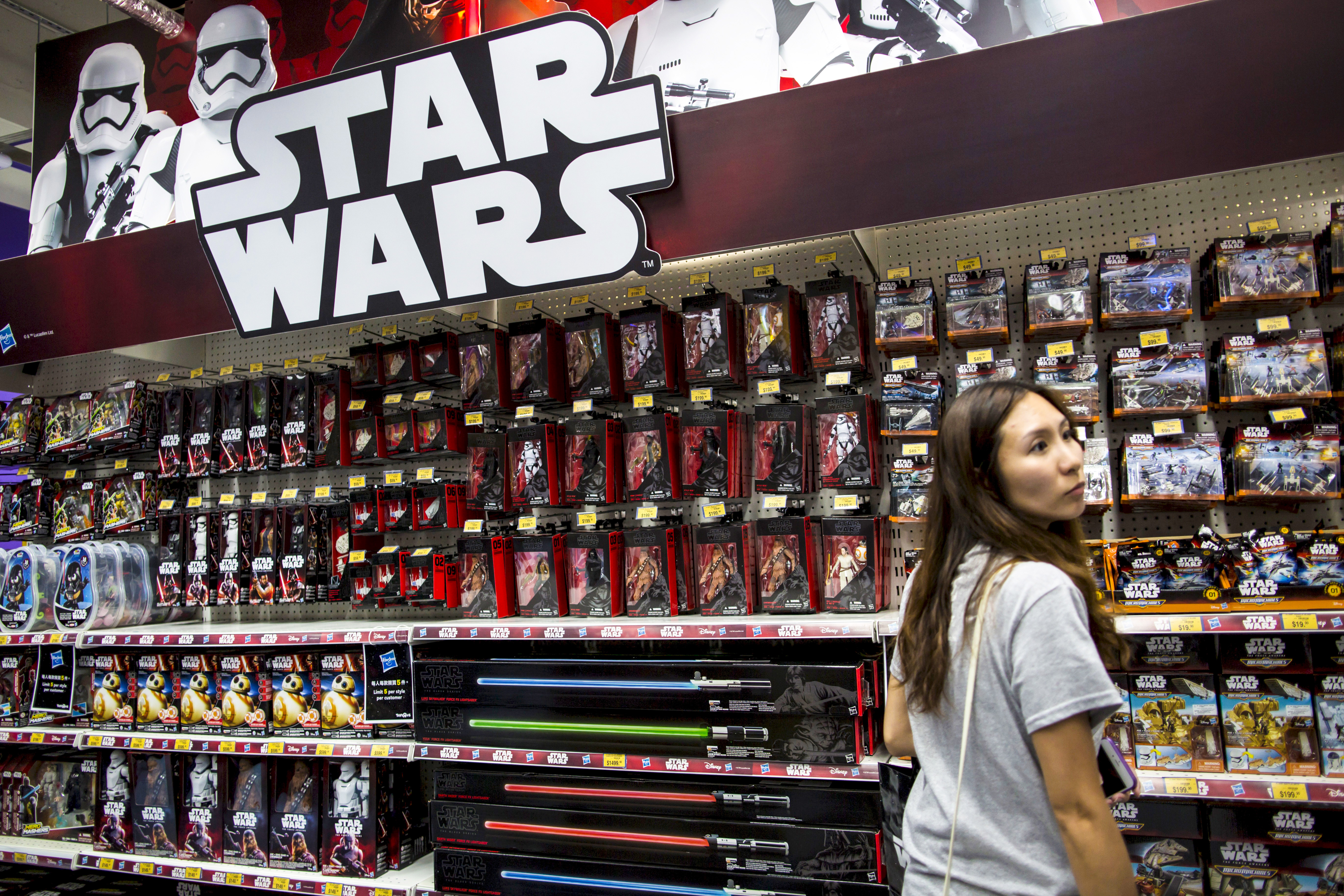Star Wars isn't a movie franchise. It's a toy franchise.
"Force Friday" is a reminder that the actual movies are just a cog in Disney's money-printing Star Wars machine


Happy Force Friday.
If you're celebrating Force Friday, I assume you're reading this story while standing in line at your nearest Toys "R" Us. If you're not celebrating Force Friday, I assume you have no idea what I'm talking about.
Force Friday, like May the Fourth, is a day devoted to Star Wars. (Yes, Star Wars has two unofficial holidays.) But while May the Fourth began as a fan-driven event, Force Friday is pure corporate synergy. Starting on Wednesday evening, and continuing for the next 18 hours in 12 countries around the world, Disney-affiliated YouTubers showed off the wide range of tie-in toys for Star Wars: Episode VII. Today, viewers who eagerly devoured the livestream can head to toy stores and buy them — immersing themselves in the world of Star Wars: Episode VII a full three months before the release of Star Wars: Episode VII.
The Week
Escape your echo chamber. Get the facts behind the news, plus analysis from multiple perspectives.

Sign up for The Week's Free Newsletters
From our morning news briefing to a weekly Good News Newsletter, get the best of The Week delivered directly to your inbox.
From our morning news briefing to a weekly Good News Newsletter, get the best of The Week delivered directly to your inbox.
If it wasn't clear before, it's time to face facts: In 2015, Star Wars is a toy franchise, not a movie franchise.
The roots of the franchise's toyetic present — and, in fact, the roots of the word "toyetic" — can be traced all the way back to the release of the very first Star Wars movie in 1977. In what might well be the single largest financial blunder in Hollywood history, 20th Century Fox allowed George Lucas to retain all the licensing and merchandising rights to Star Wars in exchange for a $500,000 directorial fee. In 2014, the overall value of the Star Wars franchise was estimated at $37 billion; with Episodes VII, VIII, and IX on the way — along with a slew of spin-offs — it will soon be worth much more. One research firm estimates that sales of Star Wars merchandise could exceed $5 billion in 2016 alone. That's more than the combined global grosses of every single Star Wars movie that has ever hit theaters — including several rounds of re-releases.
From the very beginning, toy executives saw more potential in Star Wars as a toy line than a movie. ("I expected the movie would come and go, but that it would be a great hook," Bernie Loomis once said, explaining why his Kenner toy company acquired the worldwide rights to produce Star Wars toys before Star Wars even arrived in theaters.) The movie's unexpected popularity led to a desperate gambit to capitalize in time for Christmas. Their first big Star Wars toy, the "Early Bird Certificate Package," was basically just an empty box containing a few stickers and a mail-in certificate that could be redeemed for four Star Wars figures when they were actually ready. It was a hit.
In the years that followed, the relationship between Star Wars the toy line and Star Wars the movie was essentially symbiotic. Kids who loved the movie could relive it through the toys; kids who played with the toys were goosed for the next movie. But as Star Wars continued to dominate the market, and line the pockets of anyone who produced even the most tangentially related products, the snake began to eat its own tail. George Lucas has long defended the creative impulse behind Return of the Jedi's Ewoks, the cuddly teddy bear warriors that conveniently double as a toymaker's dream, but it's hard not to be suspicious when you look at the huge line of Ewok-related ancillary products: children's books, spin-off movies, a cartoon series, and an entire separate toy line.
A free daily email with the biggest news stories of the day – and the best features from TheWeek.com
Toys and other products have always been the true lifeblood of the Star Wars franchise: they made the most money, and kept Star Wars alive and relevant during the long, fallow periods between movies. By the time George Lucas got to the prequel trilogy in the early 2000s, entire scenes felt like they had been designed around the toys they might spawn. Take Episode III's ludicrous fight between Obi-Wan Kenobi and General Grievous, which led to an even more ludicrous Motorized Ball vs. Giant Lizard chase scene — all of which was faithfully reproduced in a LEGO set.
What's changed is how seriously the press is wiling to take it. We've reached an era when adults will scrutinize a movie's toy line in an attempt to suss out the plot months before the movie arrives in theaters. Last year, leaked images of the LEGO tie-in sets for Avengers: Age of Ultron spoiled several of the movie's big set pieces. In February, a leaked image of a $34.99 Indominus Rex doll with "chomping action" spoiled the cinematic reveal of the big new dinosaur in Jurassic World. And those franchises, while ridiculously successful, have neither the history nor the hype factor that greets Star Wars. With bloggers tripping all over themselves to piece together the story of Star Wars: Episode VII — instead of, you know, just seeing the movie in December — it's hard to fault the gatekeepers for taking a can't-beat-'em-join-'em approach and turning the release of the new Star Wars toys into its own event.
And hey, if this is your thing, some of those toys look really cool! I grew up with plastic lightsabers and Super Star Wars and Star Wars Micro Machines and a Yoda Halloween costume, but the stuff teased in the Force Friday livestream takes the franchise's toyeticism to another level. Building your own custom plastic lightsaber looks like a blast. The full-body children's costumes for characters like Rey and General Phasma look great — and, as Decider's Meghan O'Keefe noted, offer welcome playtime dress-up options for little girls that go beyond the standard fairies and princesses. And the new BB-8 droid replica is a genuine technical marvel. Take a look for yourself:
It's a testament to the unsurpassed cultural penetration of Star Wars that the movies themselves are a mere cog in the franchise's moneymaking system. When Star Wars: Episode VII arrives in December, it will undoubtedly be a massive hit — in all likelihood, one of the highest-grossing movies in history. But make no mistake; whether or not Episode VII even existed, that multibillion-dollar Star Wars machine would keep churning.
Scott Meslow is the entertainment editor for TheWeek.com. He has written about film and television at publications including The Atlantic, POLITICO Magazine, and Vulture.
-
 Political cartoons for November 22
Political cartoons for November 22Cartoons Saturday’s political cartoons include Trump's autopen, war for oil rebranded, and more
-
 Hitler: what can we learn from his DNA?
Hitler: what can we learn from his DNA?Talking Point Hitler’s DNA: Blueprint of a Dictator is the latest documentary to posthumously diagnose the dictator
-
 Government shutdown: why the Democrats ‘caved’
Government shutdown: why the Democrats ‘caved’In the Spotlight The recent stalemate in Congress could soon be ‘overshadowed by more enduring public perceptions’

